Related Research Articles

The 1987 New Zealand general election was a nationwide vote to determine the shape of the 42nd sitting of the New Zealand Parliament. The governing New Zealand Labour Party, led by Prime Minister David Lange, was re-elected for a second term, although the Opposition National Party made gains. The election also saw the elimination of the Democratic Party from Parliament, leaving Labour and National as the only parties represented.

The 1996 New Zealand general election was held on 12 October 1996 to determine the composition of the 45th New Zealand Parliament. It was notable for being the first election to be held under the new mixed-member proportional (MMP) electoral system, and produced a parliament considerably more diverse than previous elections. It saw the National Party, led by Jim Bolger, retain its position in government, but only after protracted negotiations with the smaller New Zealand First party to form a coalition. New Zealand First's position as "kingmaker", able to place either of the two major parties into government, was a significant election outcome.
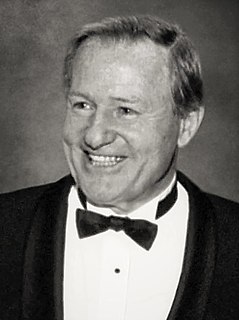
The 1993 New Zealand general election was held on 6 November 1993 to determine the composition of the 44th New Zealand Parliament. Voters elected 99 members to the House of Representatives, up from 97 members at the 1990 election. The election was the last general election to use the first-past-the-post electoral system, with all members elected from single-member electorates.
Clevedon was a New Zealand parliamentary electorate from 1987 to 1993 and then from 2002 to 2008. For the first six-year period the electorate was represented by Warren Kyd. For the second six-year period, the electorate was represented by Judith Collins.
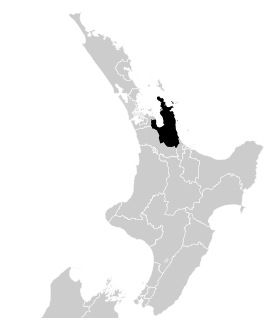
Coromandel is a New Zealand electoral division returning one member to the House of Representatives. It is currently represented by Scott Simpson, a member of the National Party.
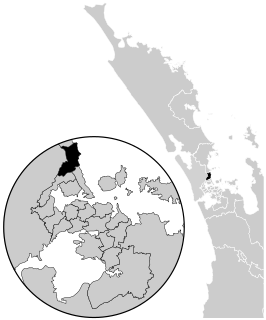
East Coast Bays is a New Zealand parliamentary electorate. It was first formed in 1972 and has existed apart from a break lasting two parliamentary terms. The electorate has been held by Erica Stanford of the National Party since the 2017 general election.
Port Waikato is a New Zealand parliamentary electorate which existed for four parliamentary terms from 1996 to 2008, and was recreated by the 2019/20 electoral redistribution ahead of the 2020 election. It was held by Bill Birch for one term, and by Paul Hutchison for the following three terms; both were members of the National Party.
Eastern Bay of Plenty is a former New Zealand parliamentary electorate, which existed for one parliamentary term from 1993 to 1996, and was held by National's Tony Ryall.

Wellington-Karori is a former New Zealand parliamentary electorate in the Wellington region, which existed for one parliamentary term from 1993 to 1996, and was held by Pauline Gardiner. In 1995, Gardiner defected from National to United New Zealand.
Hauraki is a former New Zealand parliamentary electorate, from 1928 to 1987 and 1993 to 1996. In the 1987 general election it was renamed Coromandel, the name that had been used from 1972 to 1981. In 1993 it reverted to Hauraki, but became Coromandel again for the first MMP election in 1996.
Far North is a former New Zealand parliamentary electorate, which existed for one parliamentary term from 1993 to 1996, and was held by National's John Carter.
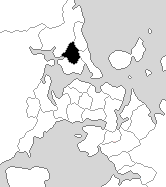
Glenfield was a New Zealand parliamentary electorate for four terms, from 1984 to 1996. It was represented by two members of parliament, first Judy Keall of the Labour Party, and then Peter Hilt of the National Party. Hilt defected to United New Zealand in 1995.
Titirangi is a former New Zealand parliamentary electorate. It existed from 1987 to 2002, with a break from 1996 to 1999. It was represented by four members of parliament, with three of them from Labour and one from National.
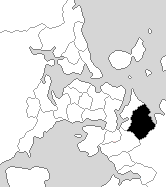
Howick is a former New Zealand parliamentary electorate, which existed for one parliamentary term from 1993 to 1996, and was held by Trevor Rogers. In 1995, Rogers defected from National to the Right of Centre party.
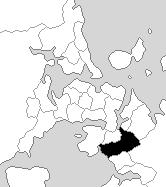
Otara was a New Zealand parliamentary electorate in Auckland, from 1984 to 1996. It existed for four parliamentary terms and was represented by three members of parliament, two from Labour and one from National.
Tongariro is a former New Zealand parliamentary electorate, from 1984 to 1996. During the four parliamentary terms of its existence, it was represented by three members of parliament.
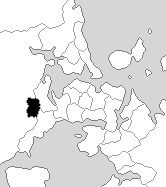
Henderson is a former New Zealand parliamentary electorate, from 1969 to 1978 and then from 1993 to 1996.
Dunedin West was a New Zealand parliamentary electorate, in the city of Dunedin. It existed for three periods between 1881 and 1996 and was represented by seven Members of Parliament.
Maramarua is a former New Zealand parliamentary electorate to the south of the Auckland area from 1987 to 1993. During those two parliamentary terms, Maramarua was represented by Bill Birch of the National Party.
Hauraki was a New Zealand parliamentary Māori electorate returning one Member of Parliament to the New Zealand House of Representatives. It existed for one parliamentary term from 1999 to 2002, and was held by John Tamihere.
References
- 1 2 McRobie, Alan (1989). Electoral Atlas of New Zealand. Wellington: GP Books. pp. 111f. ISBN 0-477-01384-8.
- 1 2 3 Part 1: Votes recorded at each polling place (Technical report). New Zealand Chief Electoral Office. 1993. pp. 62, 162.
- ↑ "Electorate Profile Coromandel" (PDF). Parliamentary Library. October 2005. p. 3. Archived from the original (PDF) on 23 February 2013. Retrieved 26 June 2015.